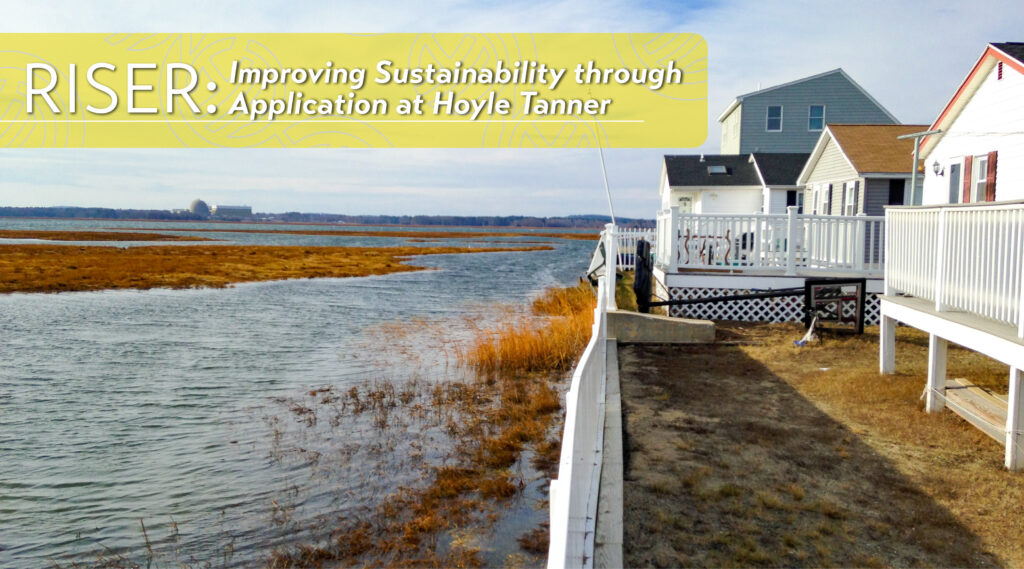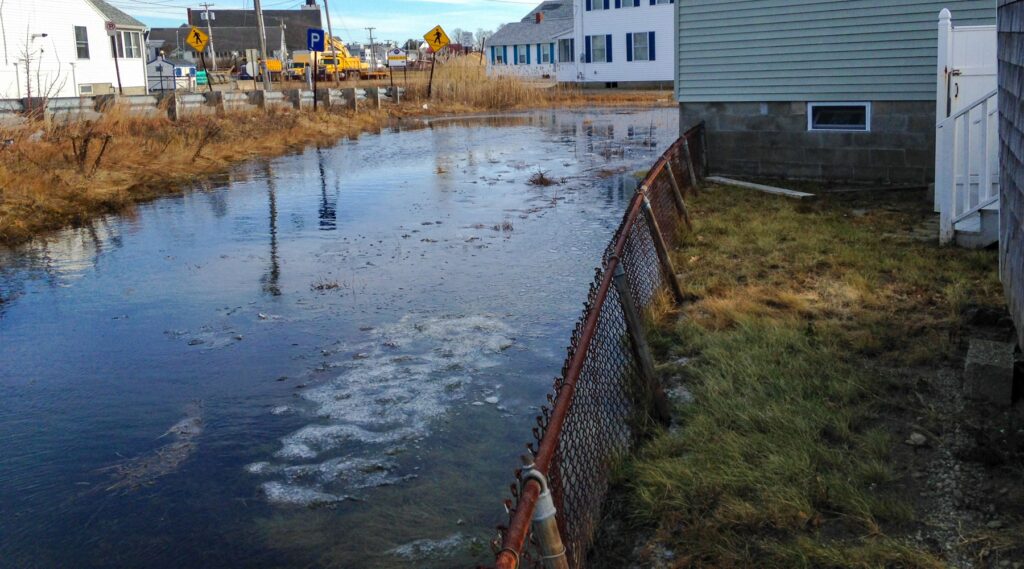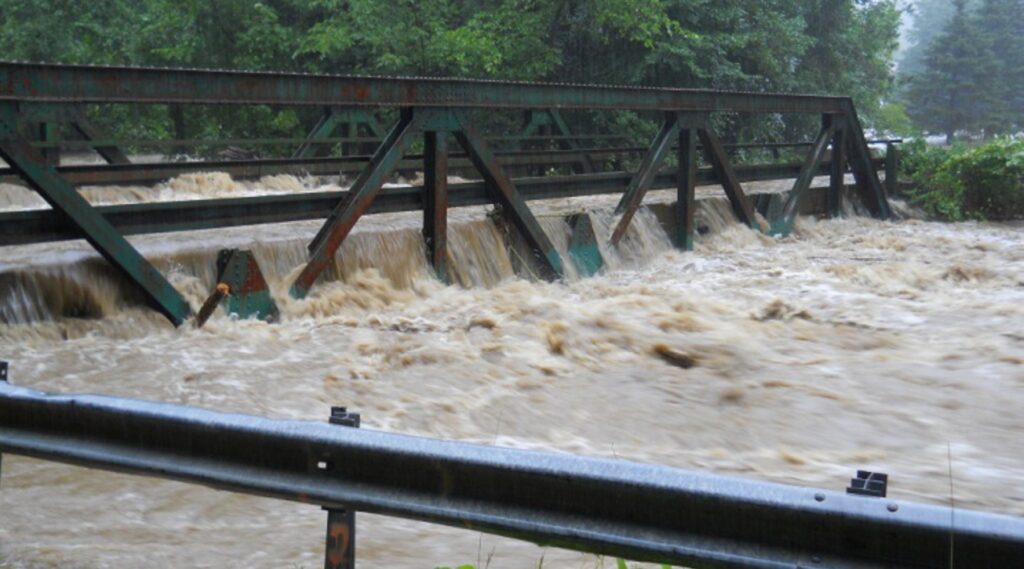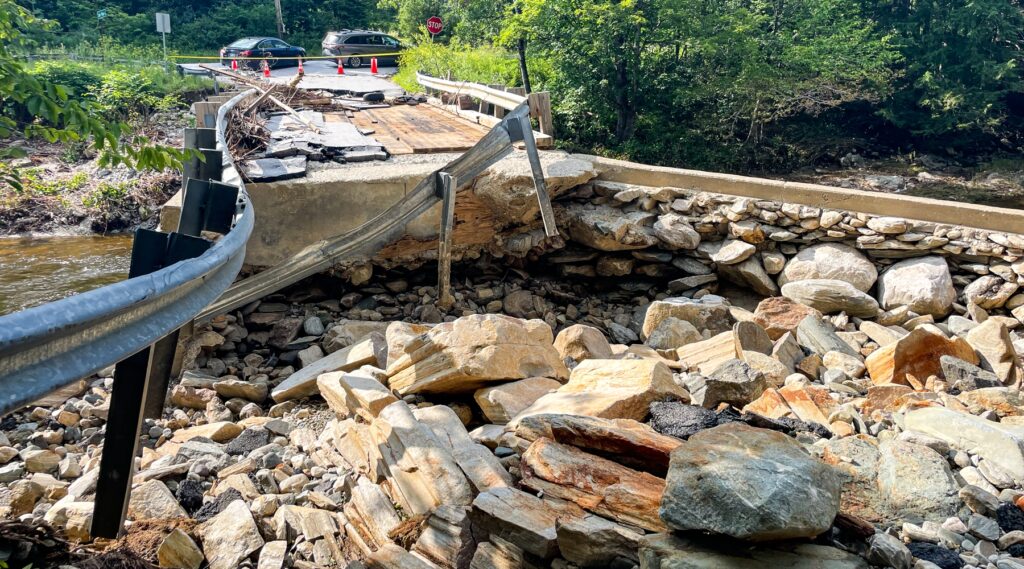
It’s been nearly two years since the Board of Directors implemented the RISER Committee as a Strategic Planning Initiative. RISER is an acronym, standing for “Resilience, Innovation, Sustainability, Economics, and Renewables,” and the goal of the group is to reduce the company’s carbon footprint and help deliver new types of resilient, innovative, and – most of all – sustainable solutions to our clients in the face of climate change. Since its inception, those of us in the RISER Group have been largely focused on generating the company’s Climate Action Plan to define our objectives and practical ways of achieving them.
Our group has been focused on identifying opportunities for technical improvement focused on sustainability and resilience, pursuing relevant training, and implementing new, improved, and standardized methods on our projects so we can deliver quality solutions to our clients.
Several of the technical improvement topics, or modules, we will pursue training in are directly related to the water, wastewater, and stormwater study and design work I do every day. Here are three areas of standard engineering practices we plan to look at through the lens of sustainability.
1. Regulatory Resilience & Vulnerability Assessments
Our specific focus is getting RISER members fully trained in completing resilience and vulnerability assessments proficiently to satisfy new requirements from regulatory agencies at the federal and state levels; this is one of our highest priorities.
These types of assessments have become more common over the years, and comprehensive evaluations of risk, vulnerability, and resilience for critical infrastructure are key to approval for certain project funding opportunities, namely the Clean Water State Revolving Fund.
Some general tools and guidance exist for these types of analyses, including the EPA’s Flood Resilience Guide, Resilient Strategies Guide, and Climate Resilience Evaluation and Awareness Tool, among others. Other related regulations include the new Federal Flood Risk Management Standard, which dictates minimum flood protection levels for funding utilization. For example, new guidance in New Hampshire has been recently developed for coastal flood risk assessments, including NHDES’s Env-Wt 603.05: Coastal Vulnerability Assessments and UNH’s NH Coastal Flood Risk Summary.

The majority of the regulations and guidance focus on climate change projections, extreme weather events, and the hydrologic and hydraulic impacts on water, wastewater, and stormwater utilities. While many engineers at Hoyle Tanner have dabbled in these topics, this type of comprehensive technical analysis is something the company has little experience with.
Our RISER members will leverage the guidance in conjunction with outside information including flood maps, historic climate data, and GIS materials to generate standardized and repeatable procedures for the company to follow so we can efficiently complete resilience and vulnerability assessments for relevant projects.
2. Improved Hydrology & Hydraulics Modeling
Hydrology & Hydraulics (H&H) modeling is a critical component of many Hoyle Tanner projects spread throughout each of our disciplines. Common applications include drainage designs, stormwater treatment designs, bridge approach hydraulics, pump station studies, and water system studies. Many of our professionals have experience with one or multiple types of models through the use of software such as HydroCAD, SewerCAD, EPANET, and HEC-RAS, among others.
Having seen some of our modeling capabilities, I’ve been able to identify some potential areas of modeling improvement to better assess the risks, resilience, and vulnerability of our projects with regard to climate change impacts including sea level rise, extreme weather, and natural disasters. Hoyle Tanner does have experience in some of the areas planned for further modeling development, but standardization and documentation of our methods is critical to maintain and expand our capabilities.
Some of our employees have had additional exposure to more comprehensive modeling methods and software, specifically using Aquaveo SMS (Surface-Water Modeling System). This tool has been previously used for riverine hydrology and hydraulics modeling for bridge design projects. Aquaveo SMS is a reputable tool for any type of surface water modeling, and could be applied to a variety of projects handled by each of our profit centers. This would offer more extensive analysis capabilities than, for example, StreamStats, and these methods would be especially useful for implementing on our company’s resilience and vulnerability assessments. Additionally, Aquaveo SMS offers tidal and storm surge modeling functionalities that may allow us to pursue new types of coastal engineering projects. Improving our services in this area will likely include extensive training efforts for RISER members and documentation of analysis methods to both ensure repeatability and allow a wider range of our engineers to leverage the software’s capabilities on future projects.
All of the indicated modeling advancements are critical for Hoyle Tanner to better assess the risks, resilience, and vulnerability of our designs with regard to climate change concerns.

3. Stormwater Design Automation
The last water-related priority for RISER is the automation of stormwater treatment designs. Our team completes a significant number of stormwater treatment projects in the Burlington, Vermont area using a similar formula. However, given the repeatability of much of the work, there is room for improvement through automation which can hopefully improve the level of treatment we provide in our designs without requiring additional effort on our part or cost to our clients.
The Burlington stormwater projects typically utilize a combination of pipes, proprietary stormwater separators, infiltration chambers, gravel wetlands, and plunge pools to manage and treat required stormwater volumes. The workflow is generally formulaic but has yet to be fully streamlined, and the time spent recreating materials for similar projects limits our ability to innovate or explore solutions that may provide higher levels of water quality to our clients.
The intent of this focus is to generate a comprehensive model using spreadsheets, AI, MATLAB, or Python which can automatically produce a basic design as a starting point. The model would ideally allow only key project criteria to be input, such as minimum level of treatment, available footprint, available depth, and maximum expenditure, among other factors. Once the initial model has been developed, it can be calibrated and improved over time with subsequent project applications.
Ideally, we will reach the point where an entire conventional stormwater design can be automatically generated with minimal user input. The goal is to enable our team to dedicate more time to explore alternative sustainable solutions for client consideration, including implementing innovative methods and technologies or just learning to apply existing techniques the company does not have experience with. Also, as we explore new solutions we can continue to build them into the model for design automation.
At this point, budget limitations often hamper innovation on stormwater projects, but dramatically improving our efficiency in completing the designs could provide significant flexibility to explore and pursue more sustainable and non-conventional solutions to reduce Hoyle Tanner’s carbon footprint.

Reaching for Innovation, Geared towards Sustainability
While each of the three water-related practices discussed above are considered high-priority for RISER, there are other areas of innovation our team is also exploring which will grow our services and benefit our clients. We currently offer services in some of these areas, but the RISER group hopes to further standardize and improve our capabilities in these areas to ensure we provide optimal project solutions. Additional areas we plan to explore in further detail for project implementation include:
- Innovative and sustainable materials
- Solar and hydropower generation
- Stream restoration
- Complete streets
- Improved and standardized economic analyses (life cycle costs, cost-to-benefit, etc.)
- Sustainability funding opportunities
Our primary goals within RISER are to identify possibilities for resilient, innovative, and sustainable solutions we can provide, get trained on what we’re missing, and implement our new methods. Do you have a project in your municipality that could benefit from a sustainable solution? Reach out to me!
*It’s Hoyle Tanner’s 50th anniversary this year! Keep an eye on our Facebook, LinkedIn, and Twitter feeds for articles and anniversary news!











